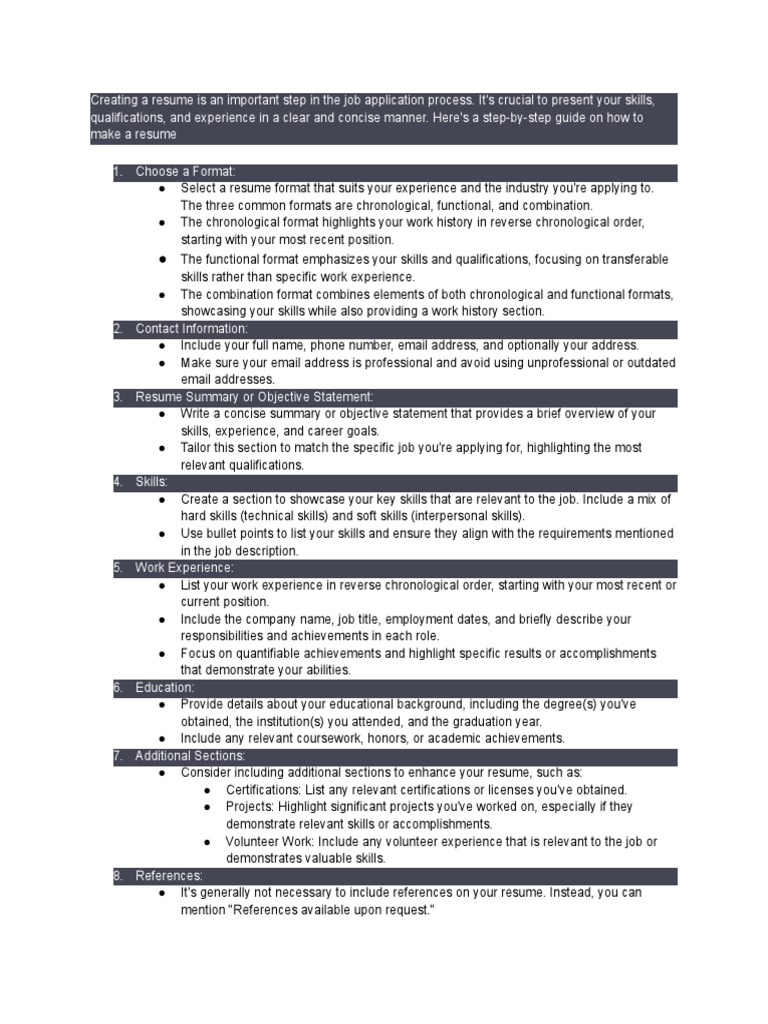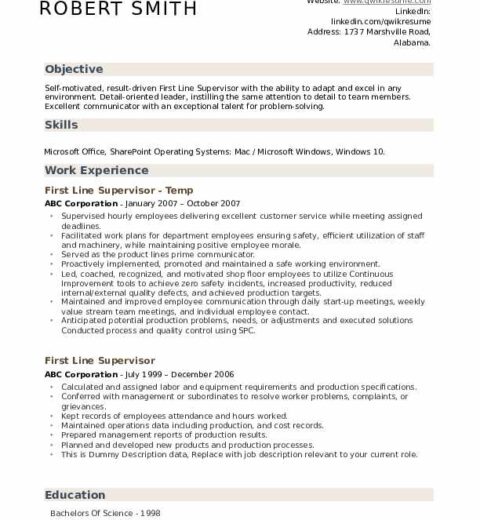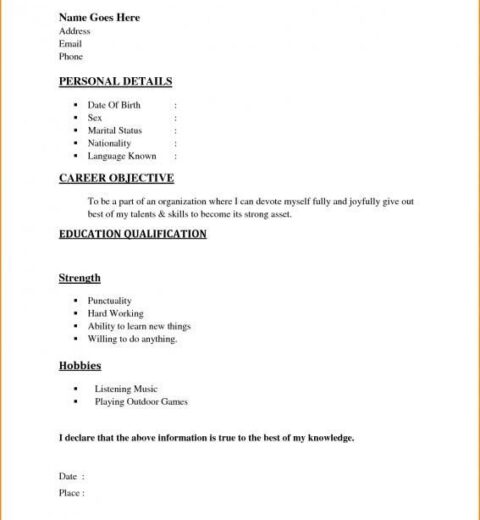Creating a resume is a crucial step in the job application process, serving as a marketing tool to showcase your skills and experience to potential employers. A well-crafted resume can significantly enhance your chances of securing an interview and, ultimately, landing the job you desire. Below are detailed steps to guide you through the process of crafting an effective resume.
1. Understand the Purpose of Your Resume
Before diving into the creation process, it’s essential to comprehend the overarching purpose of a resume. This document encapsulates your professional journey, highlighting your competencies and accomplishments to capture the attention of hiring managers. Your resume should communicate who you are, what you have achieved, and how you can contribute to a prospective employer’s success. This clarity of purpose will guide your decisions throughout the creation process.
2. Choose the Right Format
The first decision to make is selecting a suitable resume format. The three most common formats are:
- Chronological: This format lists your work experience in reverse chronological order, showcasing your most recent positions first. It is ideal for those with a steady work history.
- Functional: This format emphasizes skills and qualifications rather than work history. It is particularly useful for individuals with gaps in employment or those transitioning to a new career.
- Combination: This format blends both chronological and functional styles, allowing you to highlight your skills while still providing a traditional work history.
Select the format that best aligns with your career path and personal circumstances.
3. Begin with Contact Information
Your resume should prominently feature your contact details at the top. Include your full name, phone number, email address, and LinkedIn profile (if applicable). This section must be clearly identifiable and well-organized to ensure that potential employers can easily reach out to you.
4. Craft a Compelling Summary or Objective Statement
Following your contact information, include a brief summary or objective statement that encapsulates your professional identity and career aspirations. A summary highlights your qualifications and experiences, while an objective focuses on your career goals. This section sets the tone for your resume, giving hiring managers a snapshot of what to expect.
5. Detail Your Work Experience
Your work experience is arguably the most critical section of your resume. List your positions chronologically, starting with your most recent job. For each position, include:
- Job Title: Clearly state your title.
- Company Name: Include the organization’s name and location.
- Dates of Employment: Specify the duration of your employment.
- Responsibilities and Achievements: Use bullet points to concisely outline your responsibilities and accomplishments. Focus on quantifiable results, such as percentages or metrics, to demonstrate the impact of your work.
Be honest and ensure that every point contributes to building your value as a candidate.
6. Highlight Your Education
Next, include your educational background. List your highest degree first, followed by earlier qualifications. Include:
- Degree: Specify the type of degree obtained.
- Field of Study: State your major or concentration.
- Institution: Include the name of the college or university.
- Graduation Year: Mention the year of graduation.
It’s advisable to omit high school details if you hold a higher degree.
7. Showcase Relevant Skills
Employers often look for specific skills relevant to the position. Create a section specifically for skills that align with the job description. These may include technical skills, such as proficiency in software programs, as well as soft skills like communication and teamwork. Tailor this section for each job application to make your resume more relevant.
8. Consider Additional Sections
Depending on your profession and experience, you may wish to include additional sections such as:
- Certifications: List any professional certifications or licenses you hold.
- Volunteer Experience: Highlight any volunteer work that demonstrates your commitment and skills.
- Professional Affiliations: Include memberships in professional organizations.
- Languages: Mention any additional languages you speak, particularly if relevant to the job.
9. Tailor Your Resume for Each Application
10. Proofread and Edit
Finally, once your resume is complete, it is imperative to proofread and edit for clarity and professionalism. Look for grammatical errors, awkward phrasing, and formatting inconsistencies. Consider having a trusted friend or mentor review your resume to provide constructive feedback. A polished resume conveys attention to detail and professionalism, both of which are attractive traits to potential employers.
In conclusion, creating a resume is an art that requires careful consideration and attention to detail. By following these systematic steps, you can construct a resume that not only highlights your unique qualifications but also positions you as a strong contender in the job market. Approach each application with diligence, and remember that your resume is the first impression you will make in your professional journey.




